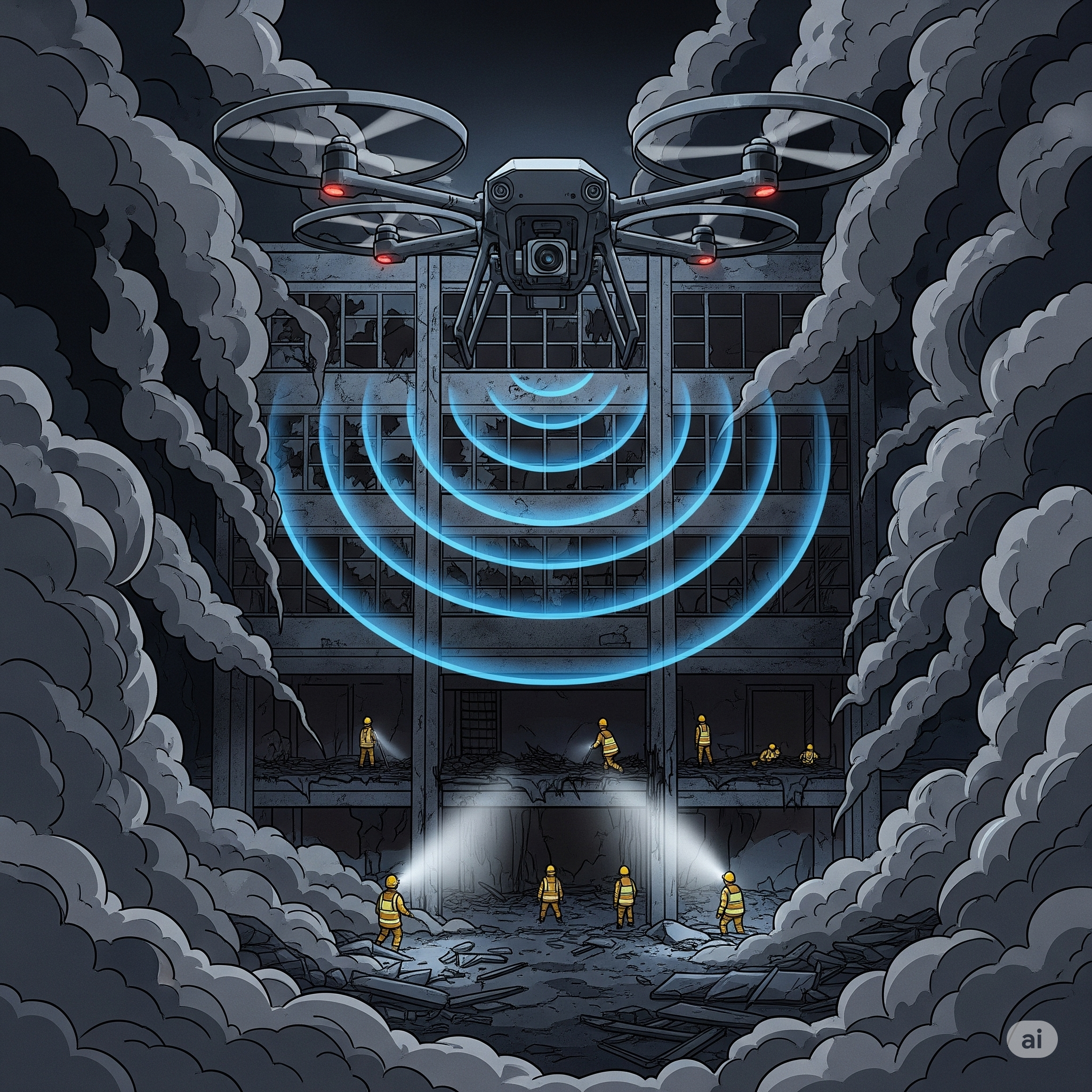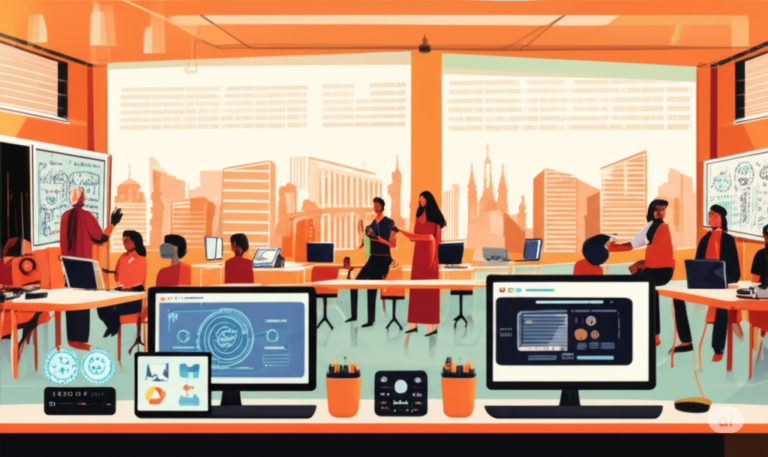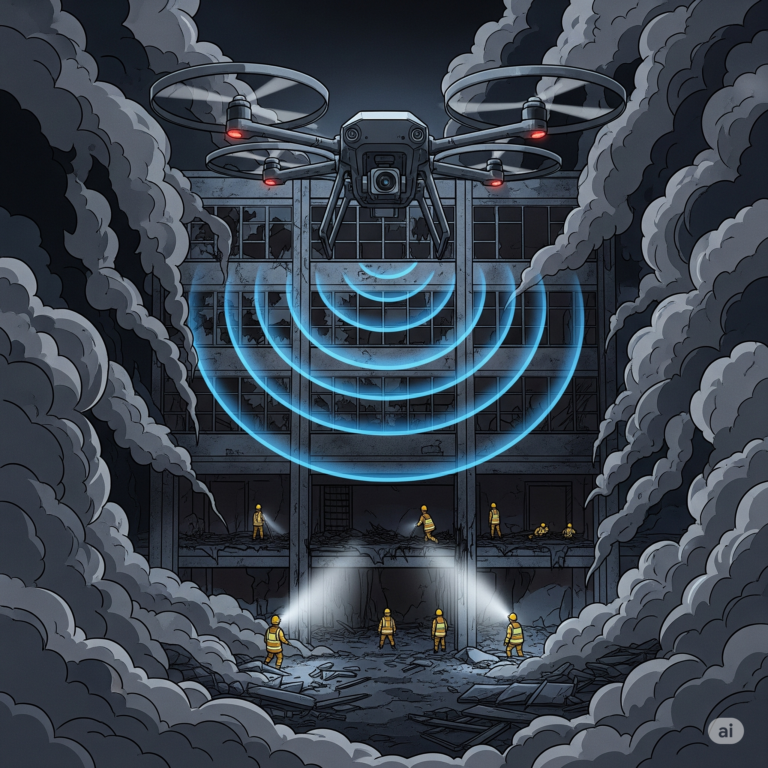From bats weaving through caves to dolphins gliding murky waters, nature perfected navigation long before humans. Now, inspired by these masters of the night, a team at the University of Michigan has crafted an artificial echolocation system‚ÄĒgranting drones the power to ‚Äúsee‚ÄĚ using sound alone. This breakthrough, supported by the U.S. Army Research Office, flips the script on how machines navigate the world, promising transformative advances for search and rescue, autonomous vehicles, and defense. Yet, it also sparks urgent new conversations about surveillance and privacy. i-hls nextgendefense
Let’s break down how this technology works, where it could take us, and the crucial ethical questions it raises.
How Does AI-Powered Echolocation Work?
Nature’s Blueprint, Engineered Innovation
Bats and dolphins solve complex navigation tasks by emitting high-frequency pulses and decoding how the echoes bounce off objects. This lets them identify obstacles, prey, and safe paths‚ÄĒeven in pitch black or murky depths.
University of Michigan engineers mimicked this ‚Äúsonar vision‚ÄĚ by mounting ultrasonic sound emitters on drones. Here‚Äôs how the system works:
- Ultrasonic pulses are sent out, bouncing off nearby objects.
- Echoes return along different paths, holding clues about size, shape, distance, and material of obstacles.
- Convolutional Neural Networks (CNNs)‚ÄĒspecialized AI models‚ÄĒinterpret these echoes. Each network is trained to decode specific object shapes from their unique acoustic signatures.
- The result? Drones can build a 3D map and navigate any environment, even in zero light, blinding smoke, or thick dust‚ÄĒwithout cameras, GPS, or laser sensors like LiDAR.
Smarter Training, Faster Results
A major innovation: the AI was trained not with costly real-world trials, but in advanced 3D virtual environments. Here, simulated echoes‚ÄĒcomplete with real-world noise and distortion‚ÄĒtaught the system to discern objects of varied shape, material, and arrangement. This simulation-first approach speeds up development, cuts costs, and broadens potential use cases.
Modular Adaptation
Unlike earlier AI that needed full retraining to learn new shapes, the University of Michigan system is modular: Want to add a new object? Just train an extra CNN module‚ÄĒno need to overhaul the entire system.¬†This makes adaptation swift and scalable.
Real-World Potential: Applications That Go Beyond Sight
Disaster Response and Search & Rescue
- Seeing Through Obscurity:¬†Drones can now map and search in darkness, smoke-filled buildings, collapsed infrastructure, or dust storms‚ÄĒfinding survivors where cameras or lasers go blind.
- Fast Reconnaissance: Swift, detailed mapping of dangerous environments (chemical spills, fires, disaster zones) without risking human lives.
Military and Security
- Operational Resilience: Enables navigation in GPS-denied or visually obscured battlefields, offering a tactical edge where other drones would be grounded.
- Covert Movement: Operating without visible light or distinctive radio emissions, reducing risk of detection.
Smart Cities & Industrial Environments
- Infrastructure Inspections: Safely surveying pipes, tunnels, or enclosed spaces with poor lighting and tricky geometry.
- Autonomous Vehicles: Vehicles could use echolocation to navigate through fog, darkness, or even urban canyons where GPS is unreliable.
‚ÄúThis work contributes to narrowing the gap between engineered and biological perception.‚ÄĚ ‚ÄĒ University of Michigan team
Tech Breakdown: What Makes This Different?
| Feature | Camera-based Navigation | LiDAR/Radar Sensors | AI Echolocation System |
|---|---|---|---|
| Works in darkness | No | Partial | Yes |
| Sees through smoke/dust | No | Sometimes | Yes |
| Privacy risks | High (identifies faces/objects) | Moderate | Context-dependent |
| Immune to lighting | No | Yes | Yes |
| Lightweight/Low Power | Moderate | High | Yes |
| Modular learning | No | Limited | Yes |
Ethics, Privacy, and Security: New Technology, New Debates
With every leap in powerful sensing comes a wave of tough questions‚ÄĒespecially when military or surveillance uses are in play.
Surveillance Without Sight
Unlike cameras, echolocation systems don‚Äôt record images or faces, but they could still ‚Äúmap‚ÄĚ and track movement through walls, dust, or darkness. If built at scale, they could identify room layouts, count occupants, or monitor activity patterns in total secrecy‚ÄĒraising critical questions:
- Who sets limits on sound-based mapping?
- Can buildings or people ‚Äúopt out‚ÄĚ of being acoustically scanned?
- Could these systems be misused for covert surveillance, bypassing current privacy protections designed for visual tech?
Military Applications and Dual-Use Concerns
Defensive uses are clear: saving soldiers‚Äô lives, augmenting disaster response, and enabling autonomous operations in extreme conditions. But any sensor that extends perception can be repurposed for targeting, threat identification, or persistent monitoring‚ÄĒall sparking fears of an expanded ‚Äúsensor-web‚ÄĚ with only partial accountability.
Broader Social Dialogue
- Regulating Emerging Tech: As with facial recognition, lawmakers must address echolocation with guidelines on data storage, transparency, and oversight before it becomes pervasive.
- Balancing Security and Rights: The goal is to harness life-saving and industrial benefits while clearly restricting overreach or abuse.
Take Action: How Should Society Respond?
- Push for Transparency: Know when and where non-visual sensors are deployed.
- Demand Ethical Use: Advocate for policies requiring oversight, data minimization, and opt-out provisions, especially in public or residential spaces.
- Follow the Research: Stay updated as university teams, industry, and governments debate the safest, fairest use of these powerful new tools.
Conclusion: Sound Vision and the Path Ahead
Drones that ‚Äúsee‚ÄĚ with sound are no longer science fiction‚ÄĒthey‚Äôre flying in labs today. By pairing biological wisdom with modern AI, researchers are not only pioneering a new era of spatial perception, but also nudging us into the next big debate over privacy, control, and technological responsibility. The challenge for all of us:¬†ensure technology that saves lives doesn‚Äôt cost us our freedoms.









+ There are no comments
Add yours